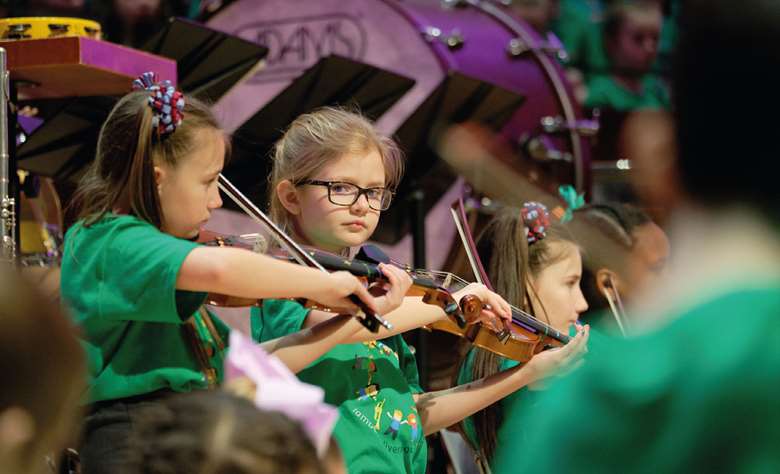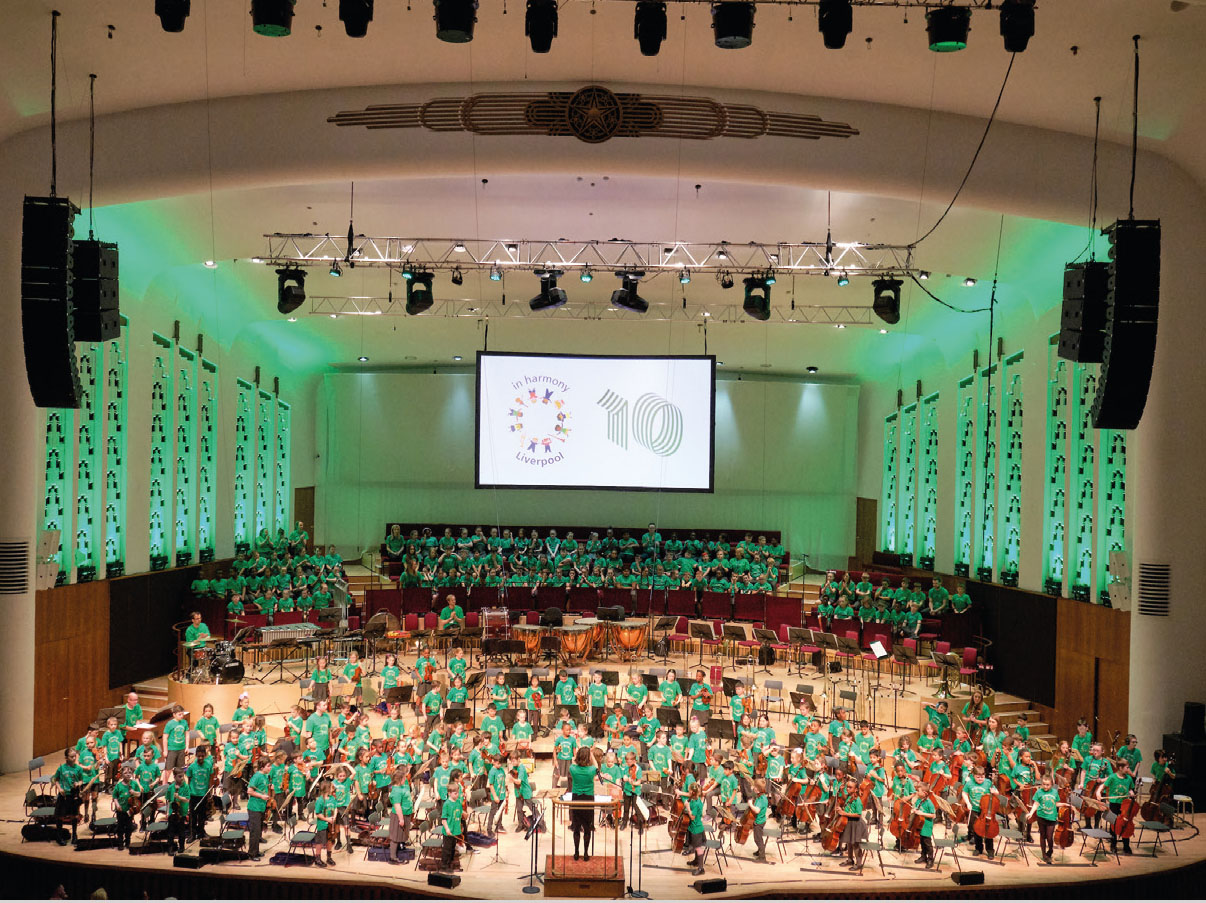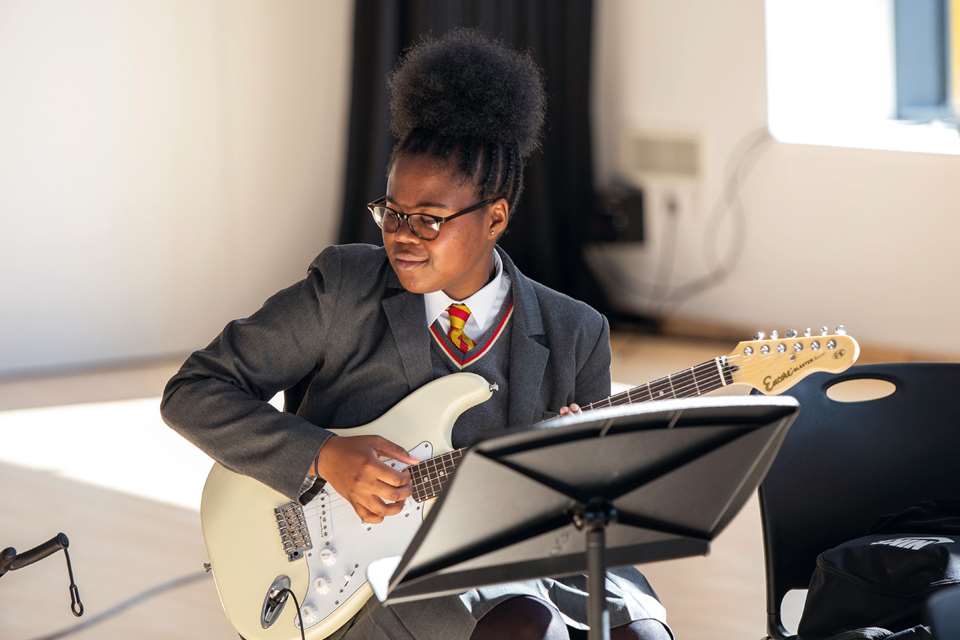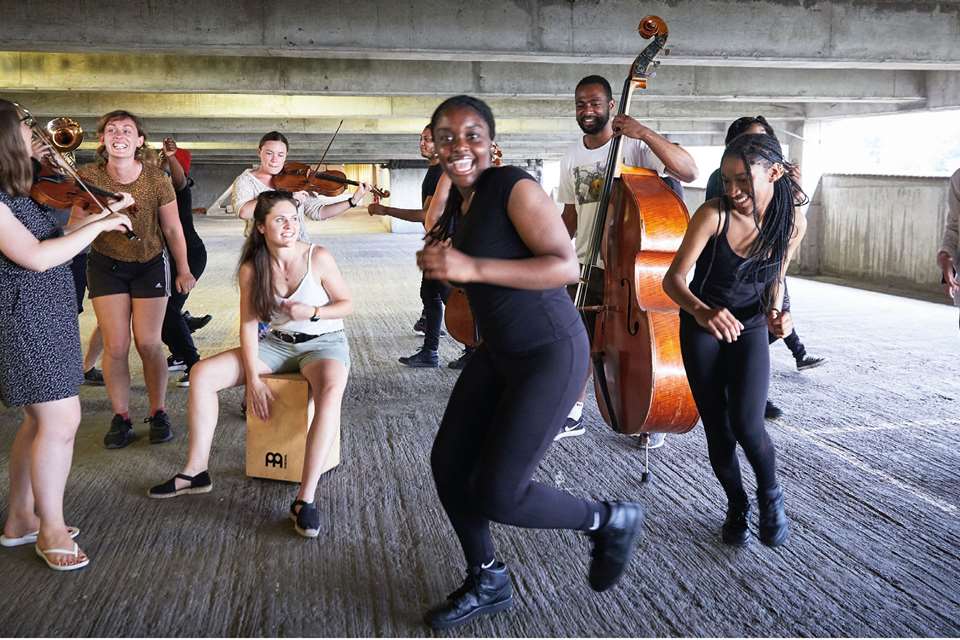Harmonic progression: In Harmony Liverpool
Glyn Môn Hughes
Friday, April 1, 2022
In Harmony has been bringing school-wide instrumental provision to primary school children since 2009. Glyn Môn Hughes gets an update from the Liverpool programme, run by Royal Liverpool Philharmonic Orchestra.

Mark McNulty
The stage at Liverpool Philharmonic Hall is filled with young children in green T-shirts clutching half-sized violins. There's an excited chatter and eyes scour the packed hall to spot loved ones. Parents, many having probably never been into the hall, watch wide-eyed as the orchestra prepares to perform. Once they start, jaws drop and there's a sense of wonder mixed with pride – probably tinged with slight disbelief – that their children are performing on the stage of Liverpool's most prestigious, music venue.
The event? The annual celebratory concert of the In Harmony project, now into its 14th year. Since 2009, when the project started, young people have given well-nigh 400 performances in 38 different venues, ranging from community venues to Liverpool Philharmonic Hall, the Sage Gateshead, and the Royal Albert Hall and Southbank Centre, both in London.
The range of music explored is extensive, including classical, pop, traditional and new music. During its existence, the project – which at its inception involved just 84 primary school pupils in the west Everton area of north Liverpool – has touched the lives of going on 3,000 children and families, and more than 300 professional musicians, artists, schoolteachers and staff. The project has expanded out of its original base in one school and is now embracing music-making in primary schools, nursery schools and family centres in both Everton and Anfield (keeping supporters of both Premiership teams happy), as well as at Liverpool Philharmonic at the Friary, the organisation's rehearsal centre in Everton.
Greatest need, fewest resources
Every child learns an instrument throughout their time at primary school. Weekly lessons are free of charge and, by the end of primary school, In Harmony young musicians have typically taken part in over 140 orchestra rehearsals and 25 performances, with most children playing their instrument at ABRSM Grade 2 standard or higher.
The project is linked to Sistema Europe, which claims that exposure to music and performance contributes to ‘raised aspirations, an increase in civic pride and stronger local communities’. This is important in areas facing considerable challenges, with Liverpool's In Harmony project aimed at children in the greatest need with the fewest resources. More than 40 per cent of participants are classed as living in poverty.
‘We are proud that Liverpool Philharmonic's In Harmony Liverpool programme has benefited over 2,500 children aged 0-18 and their families in Everton and Anfield since 2009,’ said Peter Garden, Liverpool Philharmonic executive director of performance and learning. ‘Currently around 1,500 children take part in the programme through music activities with our long-established local partners including children's centres, schools and a wide range of community organisations. Our evidence shows that In Harmony has had a positive impact on children's confidence, wellbeing, resilience and skills, including both their musical development and wider skills for learning and to support their future life chances.’
He adds: ‘Young people with a passion for music-making have also progressed into a range of programmes supporting talent and potential both within In Harmony, and other opportunities, including Liverpool Philharmonic Youth Company, Resonate Music Hub, secondary schools, national ensembles, and through our partnership with the Royal Northern College of Music.’
 © MARK MCNULTY
© MARK MCNULTY
Not just about music
Half of the children who pass through In Harmony stay with the project into secondary school and 20 have gone on to perform in Liverpool Philharmonic Youth Orchestra, Liverpool Philharmonic Youth Academy Orchestra, the National Youth Orchestra's Inspire programme, National Children's Orchestra, and Sistema Europe Youth Orchestra.
There's no selection for places on the project: everyone plays and sings – children, teachers, cooks, caretakers. But it's not just about music. In the first two years of the project, the percentage of children improving their reading skills by two levels stood at 84 per cent. The figure for numeracy stood at 75 per cent.
An evaluative report from a panel led by Dr Susanne Burns looked at the progress of In Harmony after a decade and confirmed the increased confidence, wellbeing, skills and resilience of the children; positive impacts on families and family life; strong, more hopeful and aspirational communities; and an enhanced role for Liverpool Philharmonic in its home city. In a 2016 survey, In Harmony Liverpool was seen to be adhering to key elements of Sistema elements worldwide, including high-quality, child-centred education, a sense of place, long-term commitment, evidence-based education, and the use of leadership to enhance and transform lives.
Progression routes
Liverpool Philharmonic's youth provision provides an impressive progression; starting with Tots in Harmony through early years and Year 1 where there is a child-led ‘Tuning In’ programme, as well as exposure to musicianship, singing, movement, listening and composition. By Years 2–4, the provision expands to include string lessons and ensemble playing, as well as improvisation, a summer school and Afterschool Strings. Years 5 and 6 can begin to learn wind, brass and percussion instruments and can join Everton Junior Philharmonic. The whole programme prepares children from In Harmony to join Resonate Youth Philharmonic which, in turn, opens up a wealth of opportunities in more senior orchestras.
Funding remains an area of concern, and any squeeze imposed on funding bodies, including Arts Council England and the Department for Education, could impact not only on Liverpool but also on partner programmes in London, Leeds, Newcastle, Nottingham, Telford and Stoke-on-Trent. In Liverpool, the cost per child in 2020/21 was £324, less than £1 a day. For every £1 of government funding, Liverpool Philharmonic raises a further £2 from other sources, helping grow In Harmony.
‘Since we established In Harmony, we always said that this is a long-term programme, and we remain as committed today as we were 13 years ago,’ adds Garden. ‘Given the COVID-19 pandemic and significant challenges for everyone over the last two years, we are in the process of consulting our young people, schools and community partners to set the future direction and growth of In Harmony Liverpool.’
Meanwhile, in Philharmonic Hall, the applause is long and enthusiastic. But it is the faces of children which tell the real story: ‘We love what we do. We'll keep doing it’, they beam.




